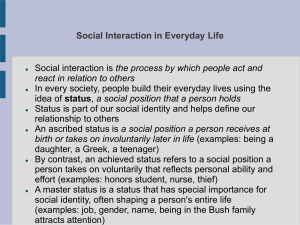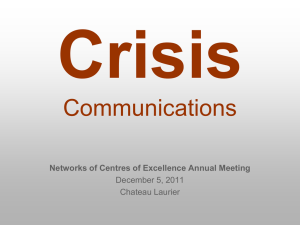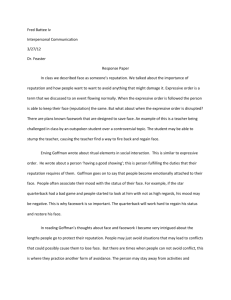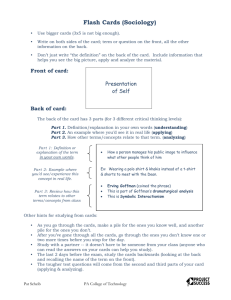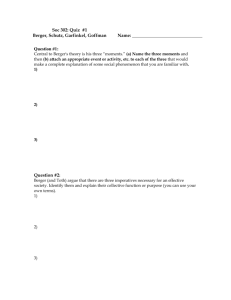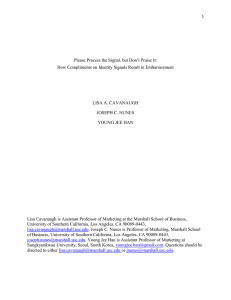Erving Goffman
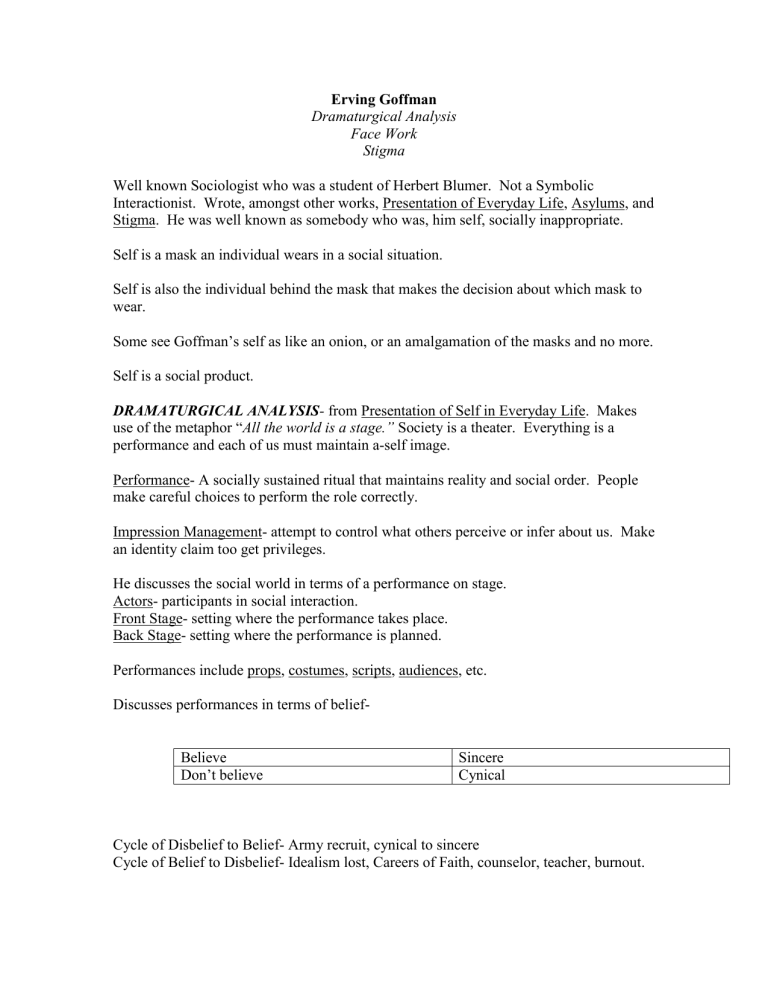
Erving Goffman
Dramaturgical Analysis
Face Work
Stigma
Well known Sociologist who was a student of Herbert Blumer. Not a Symbolic
Interactionist. Wrote, amongst other works, Presentation of Everyday Life, Asylums, and
Stigma. He was well known as somebody who was, him self, socially inappropriate.
Self is a mask an individual wears in a social situation.
Self is also the individual behind the mask that makes the decision about which mask to wear.
Some see Goffman’s self as like an onion, or an amalgamation of the masks and no more.
Self is a social product.
DRAMATURGICAL ANALYSIS- from Presentation of Self in Everyday Life. Makes use of the metaphor “ All the world is a stage.” Society is a theater. Everything is a performance and each of us must maintain a-self image.
Performance- A socially sustained ritual that maintains reality and social order. People make careful choices to perform the role correctly.
Impression Management- attempt to control what others perceive or infer about us. Make an identity claim too get privileges.
He discusses the social world in terms of a performance on stage.
Actors- participants in social interaction.
Front Stage- setting where the performance takes place.
Back Stage- setting where the performance is planned.
Performances include props, costumes, scripts, audiences, etc.
Discusses performances in terms of belief-
Believe
Don’t believe
Sincere
Cynical
Cycle of Disbelief to Belief- Army recruit, cynical to sincere
Cycle of Belief to Disbelief- Idealism lost, Careers of Faith, counselor, teacher, burnout.
In this book, Goffman argues that we present ourselves in a certain manner in order to make identity claims for ourselves. In making these claims we attempt to secure both material and social resources for ourselves.
If we do something to invalidate our identity claim, we become embarrassed.
Embarrassment results due to a failed performance.
Signs given- things we do deliberately to make a specific impression in the minds of others.
Signs given off- things we do unintentionally which make impressions we do not intend to make.
People will go to some trouble to avoid the social situation of embarrassment .
Embarrassment stops social interaction dead in its tracks and must be responded to. We say it is “problematic.”
To avoid this people will engage in:
FACE WORK
1.
Lose face- slip up in ones performance.
2.
Give face- responding to the slip up in a manner, which diffuses the embarrassment. a.
Say nothing- pretend it did not happen. b.
Engage in mild laughter- pretend it was a joke. c.
Deny the validity of the remark- you didn’t mean that did you?
3.
Get face- the situation of getting the “break.” A social debt is implied here.
There is a point where we must stop giving face because the slip up in the performance is too outrageous. Some folks will keep giving face in situations that are overwhelming because they do not want to admit they have been conned, (a slip up in their own performance as a competent social actor).
Too much loss of face transcends mere embarrassment and becomes:
STIGMA - a powerful negative social label that radically changes a person’s social identity and self-concept.
“A person is reduced from a whole and usual one to a tainted and discounted one.”
Abominations, physical deformities
Character blemishes, weak or domineering
Tribal stigma, race, religion, nationality, family (convict in family, stigmatizes family
When a person is stigmatized they must negotiate their identity with the world and themselves.
Two types of Stigma:
1.
Discredited- Publicly Known.
Coping strategy- Deny the status, pretend the status does not exist, hang out with your own kind, avoid your own kind.
2.
Discreditable- Not publicly known but could be found out.
Coping strategy- Pay Blackmail, avoid those who know the truth, move to another town.
